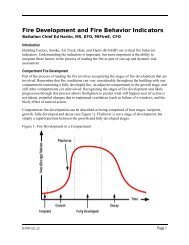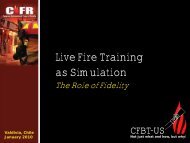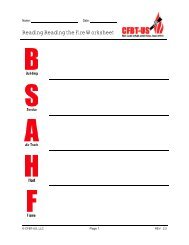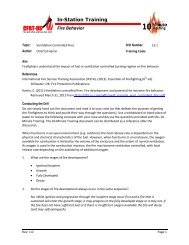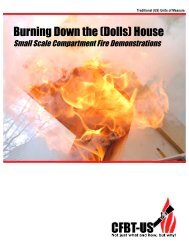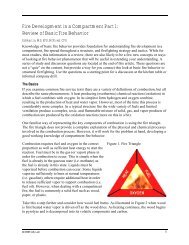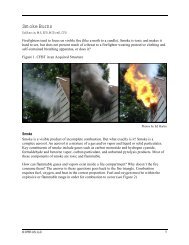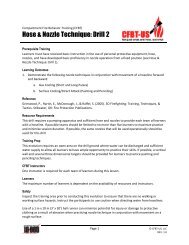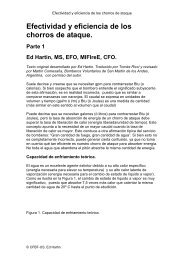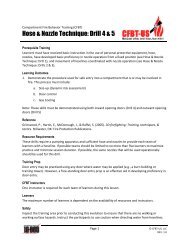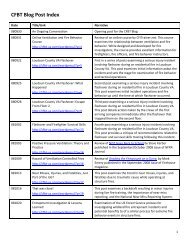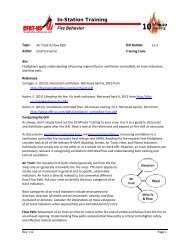CFBT INSTRUCTOR COURSE INFORMATION SHEET ... - CFBT-US!
CFBT INSTRUCTOR COURSE INFORMATION SHEET ... - CFBT-US!
CFBT INSTRUCTOR COURSE INFORMATION SHEET ... - CFBT-US!
Create successful ePaper yourself
Turn your PDF publications into a flip-book with our unique Google optimized e-Paper software.
<strong>CFBT</strong> <strong>INSTRUCTOR</strong> - <strong>COURSE</strong> <strong>INFORMATION</strong> <strong>SHEET</strong><br />
• Understand the <strong>CFBT</strong>-<strong>US</strong> standard operating guidelines applicable to use of small scale props for<br />
fire behavior demonstrations.<br />
• Recognize the required elements of a pre-training safety and instructional briefing prior to<br />
conducting demonstrations using a doll’s house.<br />
• Describe the key observations made by participants during the single compartment doll’s house<br />
demonstration.<br />
• Identify the application of the following small scale props: Single compartment doll’s house, twocompartment<br />
dolls house, four-compartment dolls house, and vent wall.<br />
Introduction to Crew Resource Management (Classroom)<br />
Participants recognize the applicability of Crew Resource Management principles to the fire service in<br />
general and to <strong>CFBT</strong> in particular.<br />
• Identify how the concept of risk homeostasis applies to the fire service.<br />
• Determine an appropriate risk management profile for <strong>CFBT</strong>.<br />
• Explain the integration of Helmreich’s error management model with the concepts presented in<br />
<strong>CFBT</strong>.<br />
• Describe the concept and basic principles of CRM.<br />
• Explain how effective communication can increase safety during <strong>CFBT</strong> and on the fireground.<br />
• Identify the how inquiry, advocacy, and assertive behavior can be applied to increase safety<br />
during <strong>CFBT</strong> and on the fireground.<br />
Extreme Fire Behavior Demonstration 1 (Live Fire)<br />
Participants recognize how full-scale demonstrations enhance understanding of fire development, extreme<br />
fire behavior, and fire behavior indicators. Participants also understand how to conduct Extreme Fire<br />
Behavior Demonstration 1. Developing competence in conducting this demonstration will require<br />
coached practice.<br />
• Understand the <strong>CFBT</strong>-<strong>US</strong> standard operating guidelines applicable to conducting Extreme Fire<br />
Behavior Demonstration 1.<br />
• Identify the potential problems that might occur while conducting Extreme Fire Behavior<br />
Demonstration 1and the appropriate methods for resolving these problems.<br />
• Identify the procedure used to inspect the window cell prior to use.<br />
• Recognize the required elements of a pre-training safety and instructional briefing and walk<br />
through of the prop used for live fire training.<br />
• Describe the key observations made by participants during Extreme Fire Behavior Demonstration<br />
1.<br />
• Explain the post-training debriefing process with particular emphasis on the use of questions to<br />
enhance participant learning.<br />
© <strong>CFBT</strong>-<strong>US</strong>,LLC Page 6 REV: 2.0<br />
www.cfbt-us.com 10/12/08




